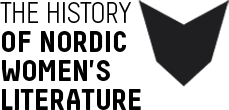Magdalena Sofia, ‘Malla’, Silfverstolpe hosted the most well-known learned salon in Sweden, frequented during the 1820s and 1830s by famous male authors of the time. Through her contact with these famous men Malla Silfverstolpe has gone down in history, whereas her own person and her individual contributions to the salon culture have been marginalised.Her great memoirs, published posthumously in four volumes, are at one and the same time the most important document about the Swedish salon culture and the most interesting literary text by a woman that has issued from this cultural milieu. This latter dimension has been neglected, and the work has primarily been highlighted as a historical source of knowledge about the period’s famous men. Yet, with her close examination of the conditions of emotion, she offers a unique insight into the contradictions of women’s lives and women’s culture in the early nineteenth century.
Tag: Sweden
Whereas Mary Wollstonecraft was a radical Romanticist in her writing as well as in her life, the Nordic female authors found it more difficult to rise above the prejudices of what was suitable for women. In Sweden at least, a patriarchal religiosity sanctioned a widespread oppression of women at all levels. To this must be added the male-chauvinist profile of the Romantic writers.The passive female ideal, propagated by Rousseau and dominant on the continent, was what the female English, French, and German authors tried to escape from by going into exile, both metaphorically and literally. In Scandinavia this way out was seldom used. The great Swedish exception is Fredrika Bremer.
Herrnhutism arrived in Sweden in the 1720s. The Stockholm Herrnhut community, which still exists today, has preserved autobiographies written in the eighteenth century and the early decades of the nineteenth century. Of these, thirty-six were written by Swedish women; the earliest dates from 1761, the latest from 1810-20. By and large, most of the female autobiographies were written between 1760 and 1790, after which the numbers fall off. The women come from all social strata; we have aristocrats and servant girls, bourgeoisie and beggars. Their autobiographies often exhibit the features that can be described as Augustinian: the women seek God in their inner being, primarily in emotion, in normal psychological processes (dreams, strong feelings). Furthermore, they have mystic features: the women abandon themselves to inner meditations on the cross and to erotically-charged meetings with Christ; they know that the depths of the soul contain the spark that makes these meetings and experiences possible.
In Denmark and Sweden in the seventeenth and eighteenth centuries, women sometimes recorded hymns and sacred songs, either from collector’s zeal or for use in private worship, and on occasion perhaps purely as material for a translation or writing exercise. Towards the turn of the seventeenth century, an increasing number of women, primarily in Denmark, not only made copies of other people’s hymns but also wrote their own. There is a marked difference between women’s hymn writing in Denmark and in Sweden. In Denmark we can find the names of writers with an extensive output, women who published a number of collections in their own name. These women found themselves in the contemporary spotlight, the subjects of tribute poems and requests for reprinting of their song collections. In Sweden, on the other hand, women primarily wrote single hymns for Pietist and Herrnhuter communities. The hymns were included in hymn books published from around 1730 onwards.

